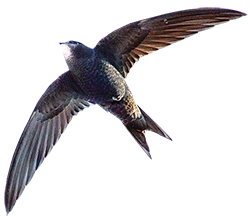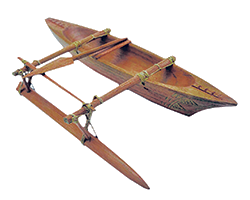
ambergris
Despite weighing up to two hundred pounds, clumps of ambergris, the waxy substance regurgitated by sperm whales, float on the ocean. If a mass of ambergris becomes trapped in the Melville gyre, an elliptical current in the Arctic Ocean, it moves less than a mile per day.

honeybees
After scout bees identify a suitable location for a new queen’s nest, they lead colonies of up to ten thousand bees to their new home. Scientists tracking a swarm in Maine recorded honeybee flight speeds of 3 to 4.2 miles per hour over a distance of 880 feet. During longer flights, the bees can reach speeds of nearly 7.2 miles per hour.

common swifts
The small birds spend most of the year in flight, remaining airborne for up to ten months after leaving their breeding grounds in Europe. Their ability to eat, sleep, drink, and breed while flying allows them to maintain an average migratory speed of 350 miles per day.

forests
Beech and hemlock trees, which migrated into the eastern United States as the ice sheets covering the continent melted, are now moving in different directions: a 2017 study found that over the past three decades, American hemlock populations have shifted 8 miles north, while beech populations have moved nearly 7.5 miles west. “It’s sort of like an old family being broken apart,” said one of the study’s authors.

polynesian canoes
Scholars estimate that ancient Polynesians traveled at a mean speed of 1.7 miles per hour in double-hulled canoes and could cross from western to eastern Polynesia in about twenty-two days. The Hokule‘a, a double-hulled canoe launched in 1975, is capable of traveling around 120 miles per day in trade winds.

mongolian horses
Genghis Khan’s successor, Ogodei, greatly expanded the thirteenth-century Mongol Empire’s postal system, the yam. Relayed by riders who stopped and exchanged horses at postal stations approximately a day’s journey apart, a letter leaving the Mongolian capital of Karakorum could reach the empire’s western border in two weeks, traveling an average of three hundred miles a day.

jupiter
According to the “grand tack” hypothesis, Jupiter may have once migrated within 142 million miles of the sun (approximately where Mars is today) before changing direction and heading for its current position of 484 million miles from the sun, a journey that took a few hundred thousand years.

data
In October 2018 electronics firm Samsung began moving the data of 1.1 billion user accounts into a cloud database run by Amazon Web Services. The process started in the European Union, where two or three terabytes of user data were duplicated in about three days. The global migration of all accounts into the cloud was completed in under eighteen months.
